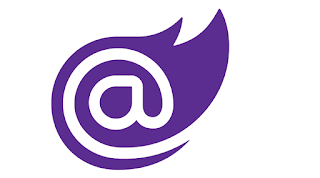Micro-Learning: The Smarter, Faster Way to Learn in the Age of AI
 |
| Micro Learning with AI |
In a world where technology evolves faster than we can schedule meetings,
traditional long-form learning is becoming harder to maintain. Developers,
designers, analysts, and everyday professionals are turning to micro-learning—a
structured approach to learning that breaks topics into small, digestible
units.
Micro-learning isn't just a trend; it's a productivity multiplier.
Whether you're learning C#, React, Python, AI agents, or something outside
tech, micro-learning can help you absorb more information in less time, with
better long-term retention.
In this article, we’ll explore what micro-learning is, how it works, its
benefits, its downsides, and walk through a real example you can use today.
What Is Micro-Learning?
Micro-learning is the process of breaking a subject into small, highly focused
lessons—usually completed in 5–15 minutes. Instead of binge-learning for hours,
you learn a small concept, apply it immediately, and move on.
Micro-learning can take many forms:
- short videos
- mini-tutorials
- flashcards
- diagrams or cheat-sheets
- practice exercises
- tiny coding tasks
- micro-projects
- conceptual summaries
The key idea:
One topic, one outcome, one short learning session.
Why Micro-Learning Works
Modern research on focus and retention shows that humans learn better in
short, concentrated bursts. Micro-learning takes advantage of:
1. Cognitive Load Theory
The brain can only handle so much information at once. Micro-learning
reduces overload.
2. Spaced Repetition
Spacing lessons makes concepts “stick” longer. Small topics are easier to
repeat over time.
3. immediate application
Every micro-lesson ends with applying what you learned—cementing
knowledge.
4. Psychological Momentum
Small wins create motivation, which creates consistency, which leads to
mastery.
Benefits of Micro-Learning
1. It Fits Easily Into Busy Schedules
You don’t need two free hours. You need five minutes.
2. Faster Skill Acquisition
Micro-learning units give you fast, measurable progress.
3. Higher Retention
Short lessons reduce overwhelm and improve recall.
4. Personalization
You can customize micro-lessons to your weaknesses or goals.
5. Perfect for AI-Driven Learning
Tools like ChatGPT, Cursor, and Copilot excel at providing bite-sized
instruction.
6. Lower Friction
You’re more likely to start—because starting is easy.
Downsides of Micro-Learning
1. It Can Become Too Fragmented
If you chunk lessons too small, you lose context or depth.
2. Not Ideal for Very Complex Deep
Topics
Some subjects require extended thinking—architecture, debugging, system
design, etc.
3. You Still Need Macro-Learning
Micro-learning works best when it feeds into a larger, structured plan.
4. Risk of Feeling “Busy but Not
Growing”
Without a roadmap, micro-learning can feel like aimless trivia instead of
a skill path.
How Micro-Learning Works (Practical
Workflow)
Step 1 — Define the Goal
“What skill do I want to acquire?”
Example: Learn Python for AI development.
Step 2 — Break It Into Micro-Topics
Each topic should be 1–2 concepts maximum.
Example topics:
- variables and types
- lists
- loops
- functions
- importing libraries
- reading files
- writing your first script
Step 3 — Learn One Topic at a Time
Each micro-lesson should:
- Take 5–15 minutes
- Have one objective
- End with a mini exercise
Step 4 — Apply Immediately
No lesson is complete until you do something with it.
Step 5 — Build Momentum
Micro-learning encourages a streak mentality:
“One small step today keeps me moving forward.”
A Real Example: Micro-Learning
Python for Beginners
Let’s walk through a micro-learning example using Python.
This is how a single micro-lesson might look.
Micro-Lesson: Python Lists
Goal:
Understand what a list is and perform basic operations.
Time Required:
8–10 minutes
1. Concept Summary (2 minutes)
A list in Python is an ordered collection of items. It’s similar
to an array in other languages.
Example:
fruits = ["apple", "banana",
"orange"]
Lists can store any type: strings, numbers, objects, or mixed.
2. Key Actions (3 minutes)
fruits.append("grape") # add item
fruits.remove("banana") # remove item
first = fruits[0] # access first item
count = len(fruits) # length of list
3. Mini-Exercise (3–5 minutes)
Task:
Create a Python list of your three favorite movies.
Add one movie, remove one, and print the list.
Example prompt for ChatGPT or Copilot:
“Help me create a simple Python script that manages a list of my favorite
movies.”
4. Done. Celebrate the Win.
And move on to the next micro-lesson tomorrow.
How To Use Micro-Learning in Your
Daily Workflow
Here are practical ways to blend micro-learning into your real life:
1. Morning Habit (5 minutes)
Read one article, watch one video, or write a tiny snippet of code.
2. Midday Break
Review a flashcard or study one concept.
3. Evening Wrap-Up
Do one tiny task that reinforces what you learned.
4. Weekly Retrospective
Group micro-lessons into a bigger macro-skill.
5. Use AI as Your Personal Micro-Tutor
Create a prompt like:
“Teach me Python in daily 10-minute micro-lessons, starting with the
basics and building up.”
And let AI guide the sequence.
Final Thoughts
Micro-learning is not about learning less—it’s about learning smarter.
In the age of AI, where new tools evolve weekly and frameworks shift
constantly, micro-learning gives you a way to stay sharp without burning out.
Whether you're mastering Blazor, Python, React, AI-Agents, or cloud
architecture, breaking your learning into small, structured sessions will help
you retain more and stay consistent.
Power up your learning today.

%20built%20with%20Blazor.%20The%20scene%20features%20a%20dynamic%20web%20app%20running%20o.webp)

Comments
Post a Comment